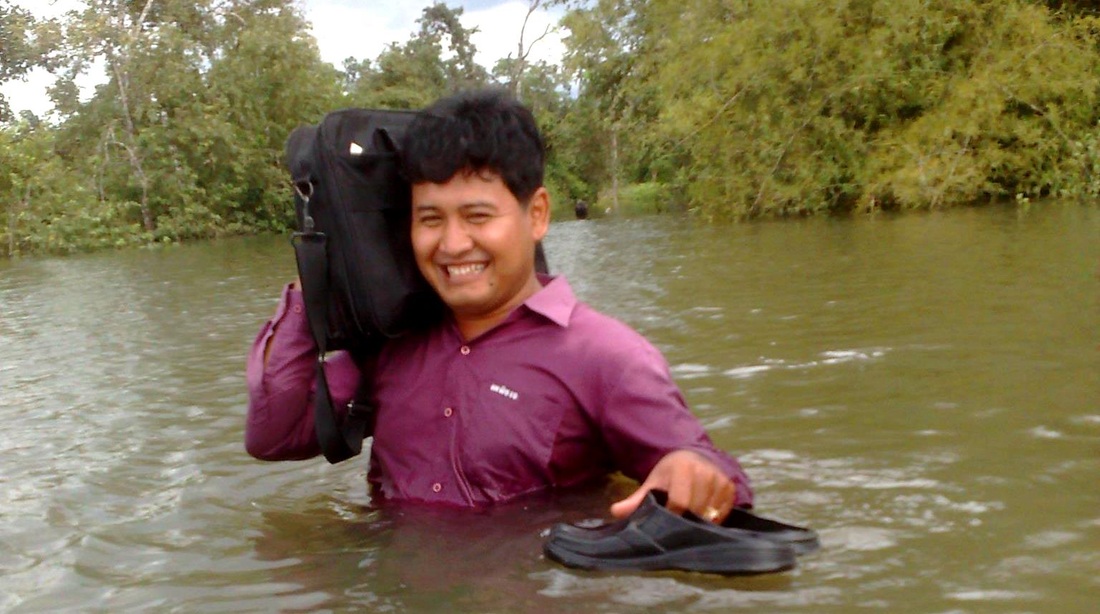In addition to “how-to” guidance, the newly published Guide features practical experiences from hundreds of organizations with strong SPM practices. Among these, Cambodian institution AMK features prominently and is also the subject of an upcoming book by Anton Simanowitz and Katherine Knotts. CGAP's Antonique Koning spoke with the authors.
CGAP: Anton, in the book, you recount that a senior AMK manager told you “AMK will never be a leader in client service." Isn’t this surprising, given that they are proudly client-focused?
Anton: It struck me as strange at first, but I discovered the real meaning. AMK takes the “road less travelled” in many aspects of its business. Though clients demand fast loan disbursement and larger loans, AMK is not prepared to shorten its detailed loan appraisal process that ensures the success of a clients’ investment. They take the steps necessary for clients to be successful—even if that means they can’t match the disbursement speed and loan sizes of other institutions.
CGAP: Do you feel that AMK takes steps that other MFIs do not in their commitment to preventing client over-indebtedness?
Anton:Yes, it is something that sets them apart. AMK is serious about matching loan sizes to client capacity to repay. Unlike other institutions, they don’t take the shortcut of relying on client collateral to determine the loan size. To do a capacity appraisal, they visit the client’s home—it takes time and a lot of effort from staff and isn’t s very convenient for clients either. In fact, most other institutions have long abandoned this step. Yet, AMK has made this a mandatory part of the lending process, even taking disciplinary action against officers who neglect the visit, which is checked as part of the internal audit process.
CGAP: How does AMK justify the costs associated with this credit decision model?
Katherine: Experience has shown that visits are critical to get an accurate understanding of the client’s situation. AMK also recognizes the inherent risk of indebting low-income people. Default is not only disastrous for the client, it obviously damages the institution’s portfolio. When things do go wrong, AMK is careful not to harass clients or seize assets, as these are counterproductive to building client loyalty and longer-term growth. Instead AMK takes a “soft-collections” approach that emphasizes problem solving. In this way, AMK was a pioneer in establishing strong client protection practices, long before this was an industry focus.
CGAP: Would you say that AMK prioritizes outreach to poor people and client protection over financial success?
Katherine: To be clear, AMK’s business model is not just about doing what is best for its clients. They are committed to sound financial discipline at all levels. AMK seeks the “sweet spot” that balances client benefit and protection with commercial success. The institution has grown rapidly, even in a highly competitive market, even while serving people considered too poor to profitably serve by other institutions. First, AMK set clear poverty outreach goals, and then set robust growth targets. They figured out that they could achieve both at the same time by serving the most remote and rural areas of the country. This was challenging and costly in a country where it in the worst cases it may take six hours to drive 150km, where field staff report sleeping in the forest overnight when rivers become impassable!
CGAP: Was it too costly for AMK to focus on poor people in rural areas?
Katherine: AMK built a business model to make this possible. First and foremost, products are tailored to fit client needs. They accomplish this by gathering a lot of quality data on clients’ needs and preference. They offer tailored products like micro-insurance for health and accidents, emergency loans when appropriate, and a credit line loan that cuts costs for clients by allowing them to draw down their loans when they need them, rather than paying interest on capital that is not being used. Good product design has translated into high levels of retention and low arrears. Additionally, costs were carefully managed and staff were asked to achieve high levels of productivity. However, the business model is more than just products and services and systems. At the heart of AMK’s success are its people.
CGAP: Tell us more about that. This rural focus can’t be easy for staff—how can AMK still expect high productivity when staff are facing challenges in physically reaching the clients?
Anton: Motivation is key. AMK compensates staff well and provides good benefits, including for example, medical care for employees’ families. HR systems focus on finding people with both the technical skills for the job and the “soft skills” necessary to work with poor people. Also, incentives recognize the extra effort involved in working in more remote areas. But perhaps most importantly, AMK’s culture builds an understanding and commitment to the mission, and there is openness to learning and sharing of ideas, which is incredibly motivating for staff.
CGAP: What can other financial services providers learn from AMK?
Anton: AMK’s experience illustrates the choices and decisions that all financial institutions committed to building their commercial success on the success of their clients need to negotiate. A deep understanding of the target clients has driven AMK’s design of products and services, the choice of where to work, the staff training, induction and performance management systems, the information systems, the key performance indicators and board reporting. Mistakes have been made along the way – weaknesses in product design and staff short-cuts in key operational areas, but AMK has learnt from these and emerged a stronger organization.
Blog post first published on the Microfinance Gateway.

 RSS Feed
RSS Feed